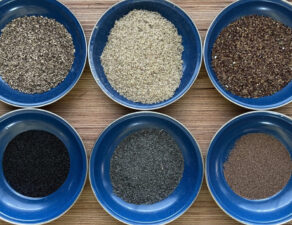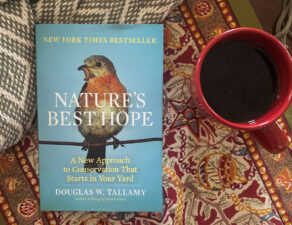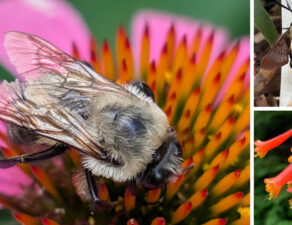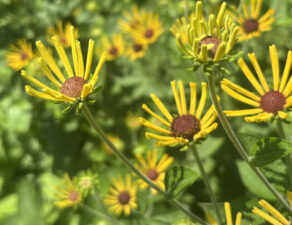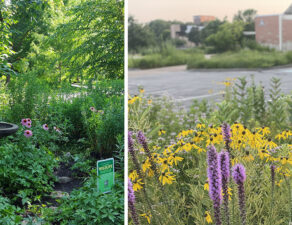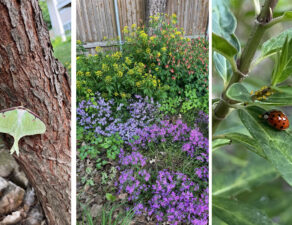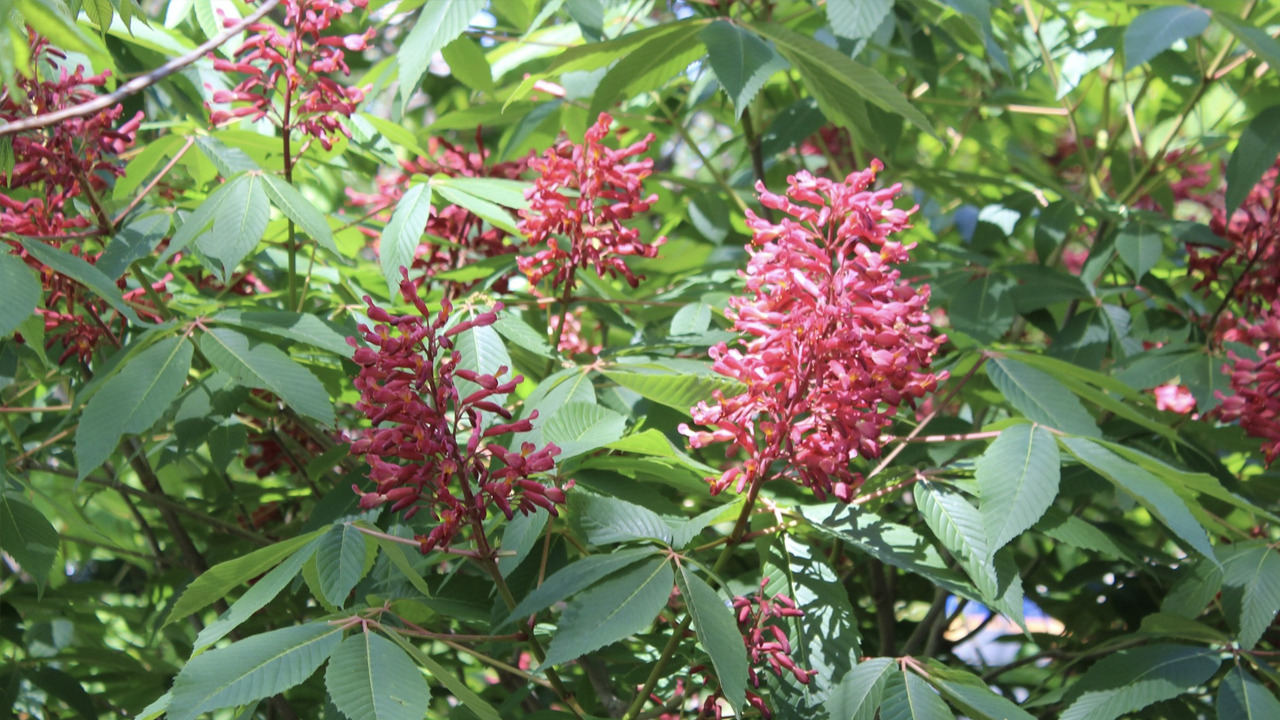
Pictured above: Red Buckeye (Aesculus pavia) from Talis’s garden
Written by Grace Suh
Among those in the know, including long-time master gardeners and horticultural professionals, Talis’s garden is a much-admired, not-to-be missed star of garden society tours. His artfully composed beds overflow with exceptional, rare, precious or otherwise outstanding plants — many more than you might think could possibly fit into a 1+ acre lot, including hundreds of meticulously pruned trees, just for starters.
But after dozens of years guided by this exacting aesthetic standard, this longtime past President of the Heartland Peony Society has undergone a recent, radical reversal in his approach to gardening.
First, Talis attended a presentation by Doug Tallamy, in which he learned about the crucial role played by native plants in the survival and well-being of wildlife, and indeed, all creatures. Intrigued, he read Tallamy’s Nature’s Best Hope, the ideas from which (as Talis tells it) “simmered in my mind.”
In February 2024, Talis attended the Deep Roots Plan It Native Conference: “That sealed the deal.” He walked out of the closing keynote by Desiree Narango (former Tallamy Ph.D. advisee, now Conservation Biologist at the Vermont Center for EcoStudies), resolving to take immediate action: “I realized: I don’t have time to lose.”
In the few months since, Talis has installed a new bed of native glade plants in one of his few sunny areas (remember all those trees?), while tucking many new native woodland shrubs and perennials into existing shade beds. This exquisite and well-established garden is therefore, ironically, the “newest” in our June 8th Tour, which offers three other properties at various stages in the habitat journey:
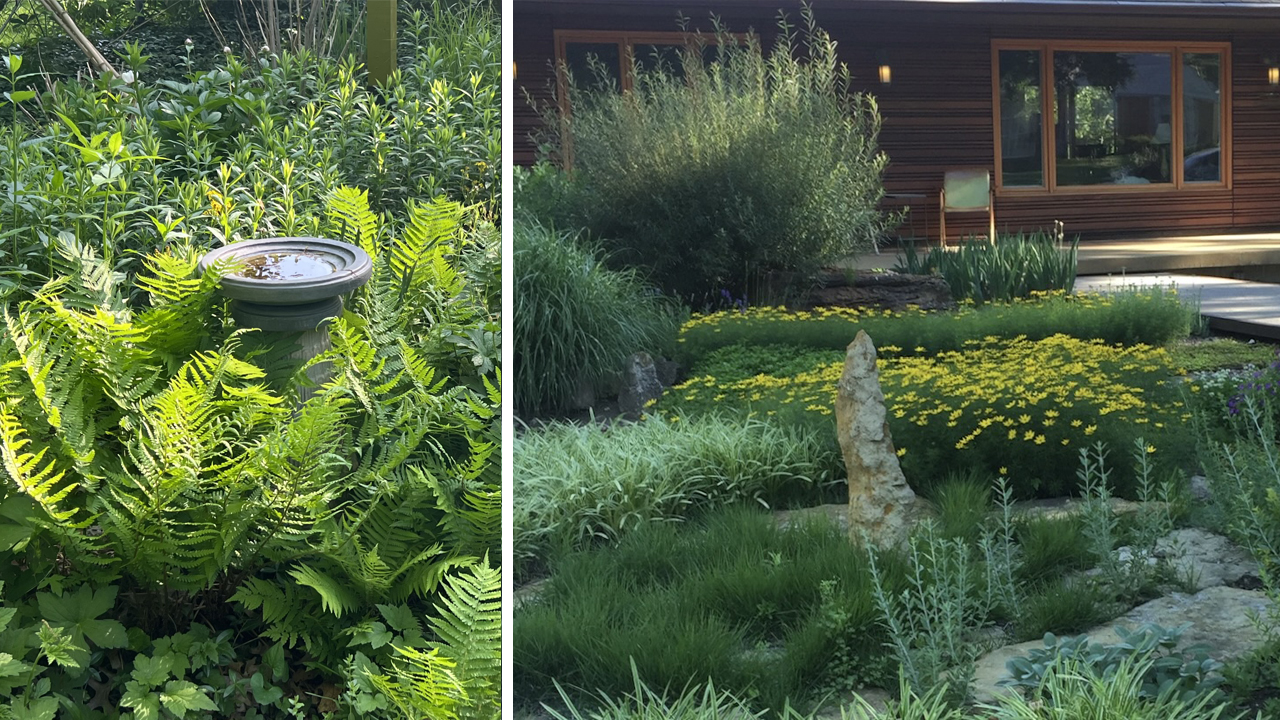
Above L-R: Kathy’s woodland melange of fern, geranium and asters; the Japanese-inspired horizontal geometry of Karen L.’s front yard grid
- SUBURBAN RESTORATION: Karen and Clayton have tackled their suburban lot in stages, starting with an all-turf front lawn, which they transformed into a stunning geometric pattern of native plants delineated by a Corten grid designed and built by Clayton. This was followed by replacement of the southwest driveway strip with drought-tolerant keystone asters and goldenrod. Most recently, they took a chainsaw to the large stand of invasive honeysuckle along their back property line, and replanted the area with native shrubs and perennials. This one is a trove of realistic inspiration for homeowners with similar challenges.
- BEAUTY & MISSION: Visitors who enjoyed the serenity of the St. Francis Sanctuary in May will find a similar fairytale atmosphere in Kathy’s lushly naturalistic garden. Although her house is located on a relatively busy stretch of road and sidewalk, the entire front yard teems with native plants — even robust, “aggressive” ones like Cup Plant and River Oats. Neighbors enjoy her seasonal display of flowers, especially the spectacular sunflowers at the entrance of her driveway, just one of Kathy’s simple and effective cues to care. The backyard, however, is the real wildlife paradise, with many rich layers of beautiful native plants that provide abundant shelter and food in every season.
- WILDLIFE REFUGE: Karen G. has long grown her garden “for the animals,” filling it with every kind of possible native wildlife food. The view from the street is artfully framed by decorative wattle fencing, behind which rises a spectacular display of New England Asters, Tall Goldenrod and Jerusalem Artichoke, as well as Chokeberry and Apple trees. In the back, a permaculture of Pawpaw, Pecan, Hazelnut, Persimmon, Elderberry and Chokeberry encircle a lovely wildlife pond (one of two ponds this month!). If you get a chance, take time to be still and observe the many (many!) birds that make their home here and fill the yard with song. Though we have become accustomed to undergrown and lifeless landscapes, the profuse beauty of this garden inspires us to a truly healthy and restorative environment for all.
Come see these gardens on our June 8th Habitat Garden Tour!
HOW TO SIGN UP
If you’re not already a subscriber, we’d love to have you join us. SIGN UP FOR JUNE or SUBSCRIBE TO THE SEASON by making a donation of any amount, according to your means.
WHERE TO GO
The Thursday before each Second Saturday (June 6th), registrants and season subscribers receive an email with garden addresses. Click on the button to download the PDF of in-depth descriptions and key plants.
If you have not been seeing the emails, please note:
- The emails are sent from: Grace@deeprootskc.org
- The subject line is: IMPORTANT 🌸 June Habitat Gardens 🦋 ADDRESSES & INFO
- If your Inbox has been filtering these emails, please add this address to your contacts so the email does not go to a junk or spam folder.
- If you do not see the email on June 6th, please email Grace@deeprootskc.org ASAP, as it is not possible to respond to phone calls and emails on the day of the tour.
See you in the garden!
WHAT IS A HABITAT GARDEN?
Habitat Gardens are gardens of native plants that provide habitat for birds, bees, butterflies and other wildlife.
Every Second Saturday, from April to October, Habitat Garden Tour invites you to three (or more) residential habitat gardens to:
- Experience diverse habitat gardens and the succession of seasonal blooms that support wildlife.
- Meet other gardeners, native plant enthusiasts and wildlife supporters.
- Find inspiration and information to grow your own habitat garden.
MORE INFO
• For Habitat Garden photos and updates, follow DeepRootsKC on Instagram or Facebook.
• For information on upcoming and past habitat gardens, visit DeepRoots.org/HabitatGardens
